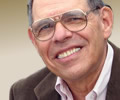Puccini’s last opera, Turandot, was left unfinished at his death in 1924. There were notes about the composer’s plans for the conclusion of the work that was almost complete. All that was lacking was the final scene, during which Calaf (the Unknown Prince) and Turandot declare their love. He’s already done so, but she has to overcome a lethal (for her suitors) case of the frigids. Puccini had declared that this final scene was to be the culmination of his career and would prove to be the best thing he had written.
La Scala, under Arturo Toscanini’s musical direction at the time of Puccini’s death, and which hadn’t given a Puccini premiere since the disastrous first performance of Madama Butterfly in 1904, was tasked with completing the opera and then mounting its world premiere. The first choice considered for the work’s completion was Riccardo Zandonai, but Puccini’s son, Tonio, vetoed that choice, stating that Zandonai was too well-known in his own right for the task. After several unlikely candidates were considered and then rejected, the job was assigned to the 50-year-old Neopolitan musician Franco Alfano (1875-1954).
Alfano produced three versions of the opera’s last scene, none of which pleased Toscanini. He finally accepted the last and shortest of these efforts, which the conductor heavily edited. Alfano’s music was not performed at the prima as Toscanini stopped the performance at the point where Puccini had died, announcing that this was the spot at which the Maestro had laid down his pen. The actual words he spoke vary according to the description of the opera’s first performance.
Toscanini did not care for the opera and never conducted it again after the third La Scala performance. The conductor’s appraisal of his compatriot’s work is spotty and puzzling. He didn’t care for Madama Butterfly, thought La Fanciulla Del West a masterpiece that didn’t move him, and completely misjudged Turandot, which is one of opera’s most performed works and which also is the last Italian opera to gain a spot in the standard repertory. One is forced to conclude that the audience understood Puccini’s works better than the legendary conductor.
What follows are three renderings of Turandot’s final scene. The first is Alfano’s original version. The one Toscanini really disliked. It’s never done. There are two reasons for its neglect. The first is inescapable. Alfano is no Puccini. The second is that it’s too long. Toscanini was right about the length. Anything not by Puccini would be too long. Best to get the necessary plot information over as soon as possible and end the piece. What Puccini completed is good enough for the work to stand on its own. Had he lived, he doubtless would have come up with material that is beyond imagining.
Alfano’s original ending
The following video is the standard Alfano ending, which is universally used around the world. It gets the job done without any unnecessary fuss.
Italian composer Luciano Berio (1925-2003) wrote another ending to Turandot. The excerpt below starts with the death of Liu and continues into the music constructed by Berio. He was commissioned by Casa Ricordi, Puccini’s publisher, to write the new ending based on Puccini’s sketches. Berio’s work is interesting, but when it takes over from Puccini, there is a stylistic jolt. Berio ends his version softly without the reprise of Nessun Dorma in the chorus. A fine effort, but everyone will likely stick with the Alfano fragment.






